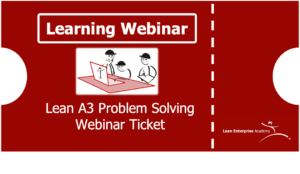Here is a preview of a forthcoming article by Dan Jones to be published on Planet-Lean where he reflects on his definition of Lean describing it as a path of discovery.
What is Lean?
In a recent article, Torbjørn Netland went back to the question ‘What is Lean?’ (Thanks, Torbjørn, for a thought-provoking piece.) Over the years, I have tried several times to answer this question in my talks, articles, and videos. Now that I have escaped the anxieties of Covid by flying to our house in Crete, I have a clear head to do so again. Here I explain lean as a path of discovery.
While it is important to define what we mean by lean at any point, I now think that attempts to define lean once and for all are mistaken. Disputes about ‘my lean’ versus ‘your lean’ are rarely productive (particularly with consultants keen to distinguish their offering from others). They simply reflect where people are on their journey to understanding lean, which will change over time as they learn more about it. Indeed, I am increasingly of the view that lean itself is a path of discovery and not a state to be defined or a model to be copied.

Lean: A Path of Personal Development
Most obviously, lean is a path of personal development in understanding the experience of work in complex systems. Few of us are craftsmen and women in control of every aspect of our work, and too many are still disposable cogs in Charlie Chaplin’s mass production machines, told to leave their brains at home in the morning. Complex, interdependent systems present new challenges. Our experience tells us that human decision-making is essential for them to be effective in changing circumstances.
The familiar lean tools are not simply to be applied to solve a problem but are in fact different ways of thinking about work itself. They help us find how to learn to perform our work to the very best of our abilities. They show how the context of this work needs to be organized for us to do so. And they give us direct feedback on how effectively we help end-users to meet their needs and how we help the next “customer” in the value-creation process to do their work.
A Path of Social Development
But lean is also what I would call a path of social development, most directly in learning to work together in teams and projects. Bringing different perspectives together requires a common language and approach. To see the progress of the work, to find and define problems and opportunities for improvement, to conduct experiments with proposed countermeasures and to reflect, respond and share what has been learnt.
Lean Leadership Development
Lean is also a path of leadership development, to find the future direction from close observation of how the organization creates value today and how user needs are changing. Then to create a dialogue and elicit proposals from across the organization to respond to these challenges, and to support the development of the necessary capabilities to carry them out. Over time, this means building a learning organization that can meet future challenges faster than the competition.
A Path for Developing Judgement
I have come to think lean is also a path for developing judgement on how to engage with and respond to the major issues of our time. Where to invest financial resources, how to build healthy social communities and how to address the existential challenges of climate change. And critically how we use digital communications and Artificial Intelligence as enablers to meet these challenges rather than as a new form of social control.
Summary
Thirty years of practice addressing questions thrown up by lean and watching others on their lean paths convinces me that you only really experience how lean changes the way you think and act by practicing lean yourself and with others. The rigorous discipline of experimenting with alternative countermeasures often throws up counter-intuitive answers and reveals the next set of questions. Each cycle deepens your experience of using the scientific method in analyzing the work to be done.
Rather than using secondary research to define lean as a set of tools that work in all settings, the focus should be on the capabilities developed by using a common problem-solving method to answer a series of specific questions in specific contexts. This must be accompanied by an analysis of what it takes to translate these capabilities into business results.
As Dan mentioned in the article, having a common problem solving method in your organisation is key. Join us for our Lean A3 Problem Solving webinar on the 7th July at 3:30pm to understand how to successfully develop this capability in your organisation.
Read a previous article from Dan Jones on “What Lean Really Is?” Also watch him talk about Lean Strategy by visiting our YouTube page.
